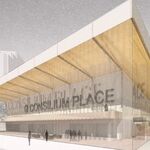Though Yonge/Bloor to Yonge/Eglinton, as a whole, might qualify as midtown-ish enough for you?
Yonge/Bloor to Yonge/Eglinton is just a section of one street,
can you really call a street "midtown"? If you call that midtown, what's the boundary, how far away from Yonge st is part of this midtown?
Retail on only one or two streets really doesn't make a "town". If, someday, Bathurst, Spadina Rd, Avenue Rd, Mt Pleasant, as well as Dupont, Davenport and more smaller streets become busier and not 95% residential like today any more, that will be a great midtown.
A "town" is about its urbanity. And the key criterion is about walkability. You gonna have grocery stores, restaurants, bars, movie theatres, furniture stores, bookstores, small boutique stores and all other small business crisscrossing the area, not just on one or two main avenues.
Honestly I hate Yonge St north of Bloor. It sucks life and vitality out of all other local streets, making all of them equally boringly quiet.




